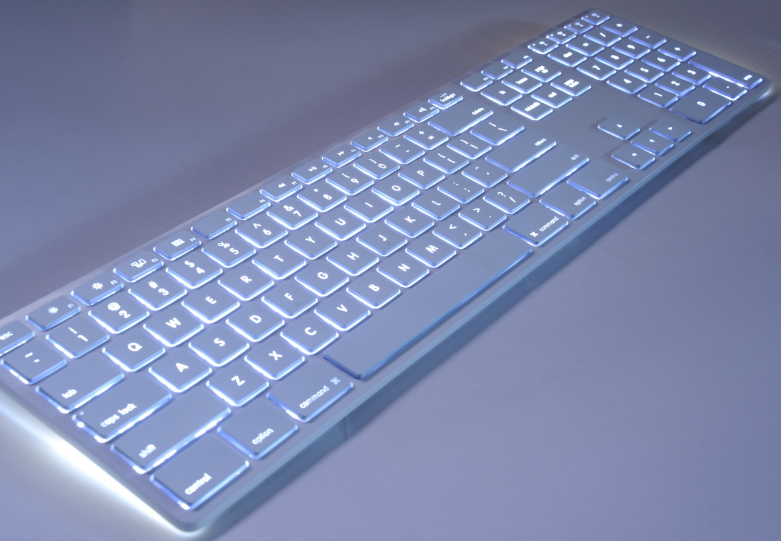In today’s digital age, typing has become an essential skill for almost every profession. Whether you’re a writer, a programmer, a data analyst, or even a student, you need to be able to type quickly and accurately to be productive. However, not everyone realizes that the keyboard you use and the way you type can have a significant impact on your efficiency, accuracy, and overall health. In this article, we’ll explore the art of typing and delve into the mechanics, ergonomics, and efficiency of different keyboard layouts and typing techniques. We’ll also discuss some common problems like wrist pain and repetitive strain injury and how to avoid them.

Mechanics of Keyboards
Before we dive into the details of keyboard mechanics, let’s take a look at the history of the keyboard. The modern QWERTY keyboard layout was invented in the 1870s by Christopher Latham Sholes, who was trying to design a keyboard that would reduce typewriter jams. He arranged the keys in such a way that the most frequently used keys were spaced apart to prevent them from getting stuck. However, as typewriters and keyboards evolved, the QWERTY layout remained largely unchanged.
In the 1930s, August Dvorak created an alternative keyboard layout called the Dvorak Simplified Keyboard. The Dvorak layout was designed to be more efficient and ergonomic than the QWERTY layout by placing the most commonly used keys in the home row, where your fingers rest naturally, and minimizing finger movement. However, despite its advantages, the Dvorak layout never gained widespread acceptance due to the prevalence of QWERTY keyboards and the cost of retraining typists.
In recent years, other alternative keyboard layouts like Colemak have emerged. The Colemak layout is similar to the Dvorak layout but is designed to be easier to learn for QWERTY users. The Colemak layout places the most commonly used keys in the home row and uses a more intuitive key placement than QWERTY.
Ergonomics of Keyboards
Now let’s move on to the ergonomics of keyboards. Ergonomics is the study of designing equipment and devices that fit the human body and its movements. When it comes to keyboards, ergonomics is essential for preventing wrist pain and other repetitive strain injuries.
One way to improve the ergonomics of your keyboard is to use a split keyboard. A split keyboard is a keyboard that is divided into two separate halves, allowing you to position each half at a comfortable angle for your wrists and shoulders. Split keyboards can help reduce strain on your wrists and hands by allowing you to type in a more natural position.
Another way to improve the ergonomics of your keyboard is to use a keyboard tray or a keyboard stand. A keyboard tray or stand can help position your keyboard at the right height and angle for your body, reducing strain on your wrists, shoulders, and neck.
Efficiency of Typing
Now let’s talk about efficiency in typing. The efficiency of typing is measured by typing speed and typing accuracy. Typing speed refers to how fast you can type, while typing accuracy refers to how many mistakes you make while typing.
The most efficient way to type is touch typing. Touch typing is a typing technique in which you type without looking at the keyboard. Touch typists use muscle memory to find the keys quickly and accurately, allowing them to type at high speeds without making many mistakes. Touch typing also reduces eye strain, as you don’t need to constantly look back and forth between the keyboard and the screen.
To learn touch typing, you need to memorize the position of the keys on the keyboard and practice typing without looking at the keys. There are many online resources and typing courses available that can help you learn touch typing.
Another way to improve your typing efficiency is to use keyboard shortcuts. Keyboard shortcuts are combinations of keys that perform a specific action, such as copying and pasting text or opening a new tab in a web browser. Using keyboard shortcuts can save you time and reduce the strain on your hands and wrists by reducing the amount of mouse clicking you need to do.
Problems and Solutions
Despite the benefits of typing, there are also some common problems associated with typing, such as wrist pain and repetitive strain injury (RSI). Wrist pain and RSI can be caused by using a keyboard that is not ergonomic, typing for long periods without taking breaks, or using improper typing techniques.
To avoid wrist pain and RSI, you should make sure your keyboard is positioned correctly and use a keyboard tray or stand to adjust the height and angle of your keyboard. You should also take regular breaks and stretch your wrists and fingers to prevent stiffness and pain.
Another way to prevent wrist pain and RSI is to use an ergonomic keyboard. Ergonomic keyboards are designed to reduce strain on your wrists and hands by allowing you to type in a more natural position. Split keyboards and curved keyboards are examples of ergonomic keyboards.
In conclusion, typing is an essential skill in today’s digital age, but not everyone realizes that the keyboard you use and the way you type can have a significant impact on your efficiency, accuracy, and overall health. By understanding the mechanics, ergonomics, and efficiency of different keyboard layouts and typing techniques, you can improve your typing skills and prevent common problems like wrist pain and RSI. Remember to position your keyboard correctly, take regular breaks, and practice good typing techniques to type like a pro.